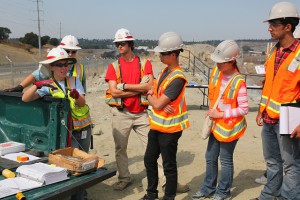A Look Into How Landpoint Provides Engineering Support For Oil and Gas Projects
 For oil and gas professionals, the need for a trustworthy engineering support partner is clear: development projects in the oil and gas industry tend to be costly, time-consuming and complex. At the same time, engineers need to be sure that their projects can be finished on time and under budget in order to meet the needs of their company. Anything that can help ease the process along and encourage better results would certainly be a plus. In this post, we’ll examine how the engineering support services provided by Landpoint can help oil and gas companies get better results from their development projects.
For oil and gas professionals, the need for a trustworthy engineering support partner is clear: development projects in the oil and gas industry tend to be costly, time-consuming and complex. At the same time, engineers need to be sure that their projects can be finished on time and under budget in order to meet the needs of their company. Anything that can help ease the process along and encourage better results would certainly be a plus. In this post, we’ll examine how the engineering support services provided by Landpoint can help oil and gas companies get better results from their development projects.
Our Engineering Support Can Help You Save Time
One of the primary concerns for oil and gas engineers is the length of time their project takes to complete. After all, the project can only be successful once it has been completed and starts paying a return on the considerable investment that oil and gas companies have put into it. The longer the completion of the project is delayed, the harder it is for companies to achieve these returns.
The technologies that Landpoint offers to its oil and gas partners can speed up various key processes of development projects. For instance, using unmanned aerial vehicles (UAVs) to conduct aerial mapping removes the need for surveyors to conduct their topographic work from ground level, and therefore leads to much faster surveys.
Our Engineering Support Services Provide Accurate Land Surveys
Land surveys form the basis for an entire development project. It’s no exaggeration to say that a project can’t be successful without an accurate and detailed land survey to get it off on the right foot.
Landpoint offers a number of different technologies that can contribute to very detailed and accurate land surveys. One example of such a technology is high-definition laser scanning, also known as LiDAR. High-definition laser scanning works by bouncing a series of lasers off of a targeted area and then using sensors to track the time of flight and phase shift as the laser points return. These results can then be grouped into a point cloud that provides an extremely detailed representation of the terrain, within four millimeters of accuracy.
Our Engineering Support Services Provide Better Communication
Good communication forms the basis of any successful project. However, keeping everyone on the same page can be difficult when some people are working out of an office and others are scattered in the field. The consequences of bad communication are misunderstandings, which in turn can lead to unscheduled delays, dangerous accidents, and other work site headaches.
To help address these problems, Landpoint offers a cloud-based project management platform, which makes it easy to share data and instructions with team members, no matter where in the globe they are. This solution allows project managers to upload information from their offices, with field employees being able to access that information from their mobile devices. As a result, these field employees will always have the input they need to be successful. They will also be able to upload data from the field right as they collect it, allowing office employees to access and use that data immediately.
Our Engineering Support Keeps Safety In Mind
Safety should be the number one priority of any oil and gas leader. Completing a development project quickly and efficiently simply isn’t worth it if you have to put your most important resource—your team members—at risk in order to do so.
Unsafe situations on oil and gas work sites primarily arise when workers have to venture into difficult terrain. Landpoint offers technologies that help remove the need for workers to enter these areas by automating the process of gathering data. With UAVs, data can be gathered from above, allowing surveyors to conduct all of their work from a distant and safe location.
To learn more about the key benefits that Landpoint can offer to your oil and gas development project, contact us today.
Image Source: U.S. Army Corps


